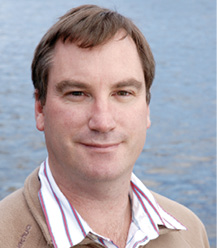
By David Johnston, Principal Scientist, Risk and Society, GNS Science, New Zealand

In January this year, the first international conference for the post-2015 United Nations landmark agreements (Sendai Framework for Disaster Risk Reduction 2015–2030, Sustainable Development Goals, and Paris Agreement on Climate Change) was held in Geneva to discuss the role of science and technology in implementing the Sendai Framework.
The conference highlighted the absolute importance of partnerships and networks to more effectively bring together the science, policy, and practice communities. These partnerships are key to making better use of the evidence base that science and technology can provide, but they also highlight the opportunities in which practice-informed evidence can enhance our knowledge base and improve our practice.
Effective partnerships speak to new ways for co-produced knowledge to be generated, shared and used. They also call for individuals and communities at-risk to the effects of hazards to have a more active role in the risk management processes. In the preparatory work for the Sendai Framework for Disaster Risk Reduction 2015–2030, the Major Group on Science and Technology identified six scientific functions that the science community can implement to strengthen and enhance their contribution.
These are:
Enhancing partnerships across the science, policy, and practice communities for disaster risk reduction in the 21st century will improve how disaster risk is understood and assessed, lead to improved early warning systems, improve governance around risk management, and enhance capacity and capability across all parts of the disaster risk reduction system.
This issue of the Australian Journal of Emergency Management has a special focus on child-centred disaster risk management, in particular in schools and in community education programs. These papers, along with others on reducing the impacts of hazards in the general community, are an important contribution to strengthening knowledge in the science, policy and practice communities.
David Johnston
Principal Scientist, Risk and Society, GNS Science, New Zealand and Professor of Disaster Management, Massey University, New Zealand.